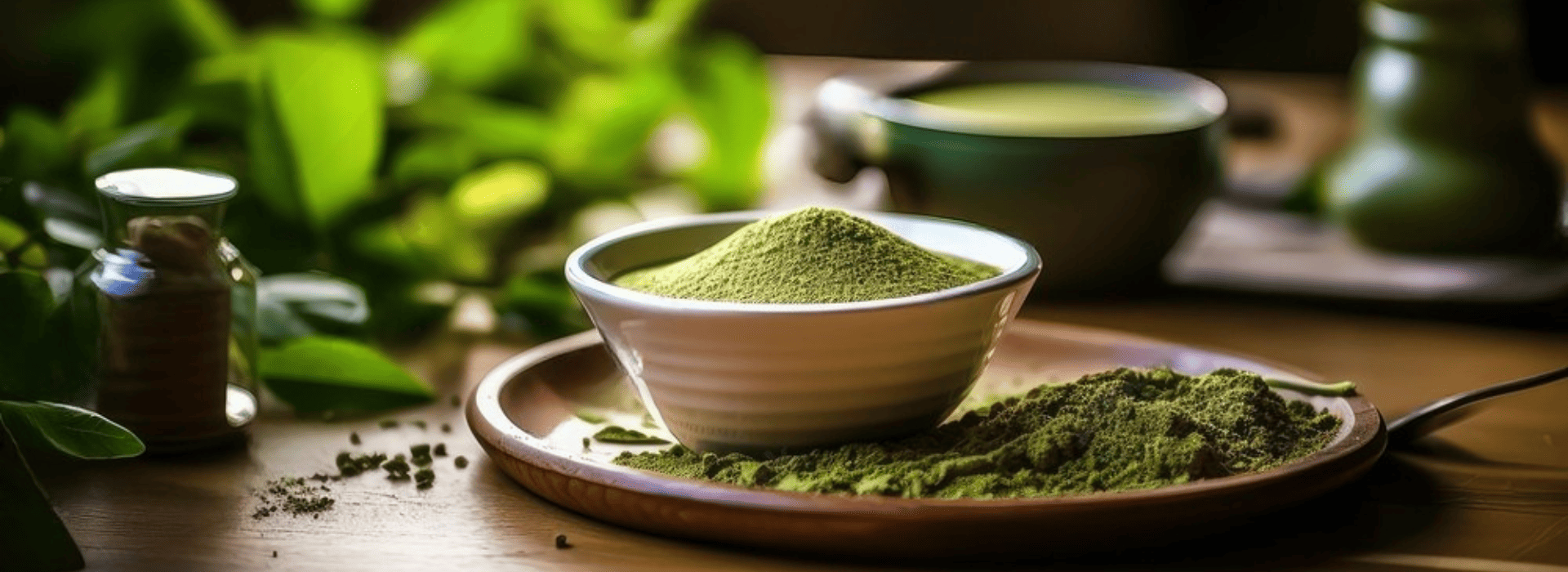Curious about Kratom tea but not sure where to start? You’re in the right place. This beginner’s guide will walk you through the basics: what Kratom tea is good for, how it’s made, and how it’s valued in different parts of the world. Whether you’re looking for brewing tips or searching “Kratom tea near me”, this guide has you covered.
Kratom tea comes from Southeast Asian traditions. For generations, people have brewed the leaves of the Kratom tree. Over time, this practice spread to modern herbal circles. Today, it draws interest from those who like exploring unique plant-based drinks.
In this guide, we’ll explore the plant’s background and the steps to prepare it as tea. By the end, you’ll see why Kratom tea holds a special place in the world of herbal beverages.
What Is Kratom Tea?
Kratom tea is a herbal beverage prepared by steeping either powdered or crushed leaves from the Mitragyna speciosa tree in hot water. Curious about what Kratom tea is good for? In many parts of Southeast Asia, this brewing tradition has been passed down for generations, valued for its simplicity, connection to cultural practice, and the benefits of Kratom.
In many parts of Southeast Asia, this brewing tradition has been passed down for generations, valued for its simplicity and connection to cultural practices. A thoughtfully made cup can be adjusted to personal preference, making it a pleasant addition to your daily rituals.
The Origins Of Kratom Tea
Kratom (Mitragyna speciosa) is a tropical evergreen tree from the Rubiaceae (coffee) family, indigenous to Southeast Asia. In these regions, the glossy green leaves, sometimes called ketum, thom, or biak, have been considered for centuries in a variety of traditional practices.
The tree was first formally identified by Dutch botanist Pieter Willem Korthals in the early 19th century, who documented it in what was then colonial Southeast Asia.
How Kratom Tea Is Prepared?
There are two popular ways to prepare Kratom tea: hot-simmered and cold-steeped. Both methods have their unique process, and each can be customized based on your preferred ingredients and tools.
Hot Brew Method (Powder or Crushed Leaf)
This method involves gently simmering Kratom in hot water to draw out its natural properties. It’s among the most common steps you’ll find in any Kratom tea recipe shared.
Steps:
- Heat 8 oz of water, then let it cool slightly (avoid boiling).
- Add a teaspoon of lemon juice or a splash of apple cider vinegar.
- Stir in your measured serving of Kratom powder or crushed leaf.
- Simmer gently for 10–15 minutes, stirring occasionally.
- Strain the tea through a fine mesh strainer or coffee filter.
- Add honey, sugar, or herbs like ginger or cinnamon, if preferred.
- Enjoy warm.
Why this works: Hot water just below boiling helps extract key alkaloids without breaking them down. The added acidity supports this process and may enhance overall extraction.
Cold Brew Method (Best with Crushed Leaf)
This is a slower process that requires patience but results in a smoother, less intense tea.
Steps:
- Add crushed Kratom leaves to a mason jar or glass container.
- Pour in cool or room-temperature water (8 oz per serving).
- Add a bit of lemon juice to help stabilize the extraction.
- Seal and refrigerate for 8–12 hours.
- Strain using a fine filter or reusable tea bag.
- Sweeten if desired and serve chilled.
Why this works: Cold brewing takes more time but can reduce bitterness and offer a lighter-tasting cup. Many find this method ideal for summer or when prepping tea ahead of time.
Loose Leaf vs. Bagged Kratom Tea
Kratom tea can be brewed using loose leaves, powder, or pre-bagged tea cuts. Each has its advantages:
- Loose leaf – Offers more control over strength and flavor but requires straining.
- Powder – Extracts quickly but may leave more sediment at the bottom of the cup.
- Bagged Kratom tea – Provides a cleaner, more convenient brew, ideal for beginners or quick preparation.
Your choice often comes down to convenience versus flexibility.
The Brewing Science: How Heat Affects Alkaloids?
Temperature plays a key role when preparing Kratom tea. If the water is too hot (boiling), it may reduce the effectiveness of certain natural compounds in the leaves. A gentle simmer, not a rolling boil, helps retain those properties. Adding acidic ingredients like lemon juice or apple cider vinegar during brewing may support better extraction. This small step can make a noticeable difference in your tea’s overall strength and consistency.
Choosing The Right Strain For Kratom Tea
Not every Kratom strain brews the same type of tea. Each variety has its own reputation and is often chosen based on personal preference:
- Red vein strains – Known for their smoother, grounding qualities.
- White vein strains – Often brewed by those who might prefer a brighter, more energizing experience.
- Green vein strains – Considered a balanced option, sitting somewhere between red and white.
When starting out, many beginners experiment with small amounts of different strains to find the profile that best suits their taste and goals.
How To Store Brewed Kratom Tea?
Freshly brewed Kratom tea doesn’t last indefinitely. If you make larger batches, here’s how to store them safely:
- Refrigeration – Store in airtight containers in the fridge.
- Shelf life – Best taken within 2–3 days for freshness.
- Freezing option – Some users freeze tea in ice cube trays for longer-term storage and quick single servings.
Proper storage helps preserve both taste and consistency.
Frequently Asked Questions
What does Kratom tea do to you?
Curious about Kratom tea effects? Kratom tea may influence energy [1], focus [2], or calmness [3] depending on the strain and preparation. Studies show its key alkaloids may affect mood [4] and alertness [5]. The method of brewing Kratom tea, particularly the water temperature and acidity, may affect its overall effect and consistency.
What is the street name for Kratom?
On the street, Kratom goes by a few casual names. People often just call it “ketum,” “thom,” or even “biak-biak” in some Southeast Asian circles. In the U.S., you might hear folks refer to it simply as “Kratom” itself, it doesn’t really have an edgy street name like other substances.
What’s the difference between Kratom tea vs kava?
Kratom tea vs kava highlights two traditional herbal drinks from different regions. Kratom tea is brewed from Mitragyna speciosa leaves; kava comes from Piper methysticum root. Both are prepared differently and valued for their unique cultural traditions, offering distinct experiences based on their plant origins.
Conclusion
Whether you’re exploring Kratom tea for the first time or refining your own brewing method, the experience is all about creating a ritual that suits your personal preferences. From traditional roots in Southeast Asia to modern adaptations using powder or crushed leaf, this botanical beverage continues to find its place among herbal drink enthusiasts.
By understanding the impact of temperature, acidity, and preparation techniques, you can brew a cup that aligns with your routine. Start simple, stay curious, and let your process evolve. After all, crafting a great cup of Kratom tea is just as much about the journey as it is the result.




